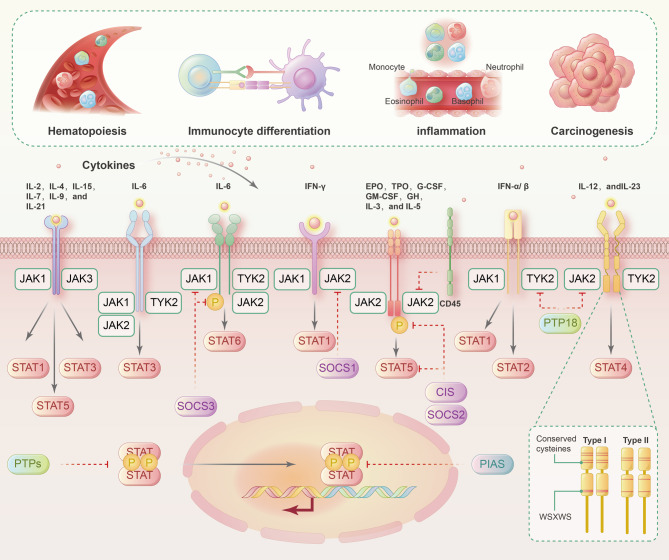Fig. 1.
Canonical activation and negative regulation of JAK-STAT signaling pathways. Canonical activation of the JAK-STAT signaling pathway: cytokines bind to their corresponding receptors, which undergo a conformational change and recruit related JAKs. The JAKs undergo phosphorylation, which leads to tyrosine phosphorylation of the receptors to create docking sites for STATs. STATs are phosphorylated, dissociate from the receptor, and enter the nucleus as homodimers or heterodimers to bind specific DNA sites and regulate cytokine-related gene transcription. Negative regulation of the JAK-STAT signaling pathway: the CIS/SOCS (cytokine signaling inhibitor), PIAS (protein inhibitor of activated STAT), and PTP (protein tyrosine phosphatase) families are participants in the negative regulation of the JAK-STAT signaling pathway. The CIS/SOCS family negatively regulates the JAK-STAT pathway through direct binding of JAKs or JAK receptors to inhibit JAK kinase activity, binding of receptor tyrosine kinase sites to intercept STAT-receptor binding, or formation of enzyme complexes to degrade JAKs or STATs. The PIAS family mainly interacts with STAT dimers to inhibit STAT binding to DNA, thereby blocking JAK-STAT signal transduction. The PTP family negatively regulates the JAK/STAT pathway mainly by dephosphorylating activated receptors, JAKs, and STATs. Solid lines indicate the activation process. The dotted lines represent negative regulation

